文章目录
- 前言
- PIECEWISE_JERK_SPEED_OPTIMIZER功能简介
- PIECEWISE_JERK_SPEED_OPTIMIZER相关配置
- PIECEWISE_JERK_SPEED_OPTIMIZER流程
- QP问题的标准类型定义:
- 优化变量
- 设计目标函数
- 约束条件
- 相关矩阵
- 二次项系数矩阵 H H H
- 一次项系数向量 q q q
- 设定OSQP求解参数
- Process
- 设置相关参数
- 更新STBoundary
- 更新速度边界和参考s
- 速度优化
- 输出
前言
在Apollo星火计划学习笔记——Apollo路径规划算法原理与实践与【Apollo学习笔记】——Planning模块讲到……Stage::Process的PlanOnReferenceLine函数会依次调用task_list中的TASK,本文将会继续以LaneFollow为例依次介绍其中的TASK部分究竟做了哪些工作。由于个人能力所限,文章可能有纰漏的地方,还请批评斧正。
在modules/planning/conf/scenario/lane_follow_config.pb.txt配置文件中,我们可以看到LaneFollow所需要执行的所有task。
stage_config: {
stage_type: LANE_FOLLOW_DEFAULT_STAGE
enabled: true
task_type: LANE_CHANGE_DECIDER
task_type: PATH_REUSE_DECIDER
task_type: PATH_LANE_BORROW_DECIDER
task_type: PATH_BOUNDS_DECIDER
task_type: PIECEWISE_JERK_PATH_OPTIMIZER
task_type: PATH_ASSESSMENT_DECIDER
task_type: PATH_DECIDER
task_type: RULE_BASED_STOP_DECIDER
task_type: SPEED_BOUNDS_PRIORI_DECIDER
task_type: SPEED_HEURISTIC_OPTIMIZER
task_type: SPEED_DECIDER
task_type: SPEED_BOUNDS_FINAL_DECIDER
task_type: PIECEWISE_JERK_SPEED_OPTIMIZER
# task_type: PIECEWISE_JERK_NONLINEAR_SPEED_OPTIMIZER
task_type: RSS_DECIDER
本文将继续介绍LaneFollow的第13个TASK——PIECEWISE_JERK_SPEED_OPTIMIZER
PIECEWISE_JERK_SPEED_OPTIMIZER功能简介
产生平滑速度规划曲线


根据ST图的可行驶区域,优化出一条平滑的速度曲线。满足一阶导、二阶导平滑(速度加速度平滑);满足道路限速;满足车辆动力学约束。
PIECEWISE_JERK_SPEED_OPTIMIZER相关配置
modules/planning/conf/planning_config.pb.txt
default_task_config: {
task_type: PIECEWISE_JERK_SPEED_OPTIMIZER
piecewise_jerk_speed_optimizer_config {
acc_weight: 1.0
jerk_weight: 3.0
kappa_penalty_weight: 2000.0
ref_s_weight: 10.0
ref_v_weight: 10.0
}
}
PIECEWISE_JERK_SPEED_OPTIMIZER流程
动态规划得到的轨迹还比较粗糙,需要用优化的方法对轨迹进行进一步的平滑。基于二次规划的速度规划的方法与路径规划基本一致。
原理可以参考这篇论文:
《Optimal Trajectory Generation for Autonomous Vehicles UnderCentripetal Acceleration Constraints for In-lane Driving Scenarios》
QP问题的标准类型定义:
m i n i m i z e 1 2 ⋅ x T ⋅ H ⋅ x + f T ⋅ x s . t . L B ≤ x ≤ U B A e q x = b e q A x ≤ b minimize \frac{1}{2} \cdot x^T \cdot H \cdot x + f^T \cdot x \\ s.t. LB \leq x \leq UB \\ A_{eq}x = b_{eq} \\ Ax \leq b minimize21⋅xT⋅H⋅x+fT⋅xs.t.LB≤x≤UBAeqx=beqAx≤b
优化变量

注意:速度规划的 s s s沿着轨迹的方向,路径规划的 s s s沿着参考线的方向。
 优化变量
x
x
x,
x
x
x有三个部分组成:从
s
0
s_0
s0,
s
1
s_1
s1,
s
2
s_2
s2到
s
n
−
1
s_{n-1}
sn−1,从
s
˙
0
\dot s_0
s˙0,
s
˙
1
\dot s_1
s˙1,
s
˙
2
\dot s_2
s˙2到
s
˙
n
−
1
\dot s_{n-1}
s˙n−1,从
s
¨
0
\ddot s_0
s¨0,
s
¨
1
\ddot s_1
s¨1,
s
¨
2
\ddot s_2
s¨2到
s
¨
n
−
1
\ddot s_{n-1}
s¨n−1.
优化变量
x
x
x,
x
x
x有三个部分组成:从
s
0
s_0
s0,
s
1
s_1
s1,
s
2
s_2
s2到
s
n
−
1
s_{n-1}
sn−1,从
s
˙
0
\dot s_0
s˙0,
s
˙
1
\dot s_1
s˙1,
s
˙
2
\dot s_2
s˙2到
s
˙
n
−
1
\dot s_{n-1}
s˙n−1,从
s
¨
0
\ddot s_0
s¨0,
s
¨
1
\ddot s_1
s¨1,
s
¨
2
\ddot s_2
s¨2到
s
¨
n
−
1
\ddot s_{n-1}
s¨n−1.
x
=
{
s
0
,
s
1
,
…
,
s
n
−
1
,
s
0
˙
,
s
1
˙
,
…
,
s
n
−
1
˙
,
s
0
¨
,
s
1
¨
,
…
,
s
n
−
1
¨
}
x=\{s_0,s_1,\ldots,s_{n-1},\dot{s_0},\dot{s_1},\ldots,\dot{s_{n-1}},\ddot{s_0},\ddot{s_1},\ldots,\ddot{s_{n-1}}\}
x={s0,s1,…,sn−1,s0˙,s1˙,…,sn−1˙,s0¨,s1¨,…,sn−1¨}
ps:三阶导的求解方式为: s ′ ′ ′ = s ′ ′ i + 1 − s ′ ′ i Δ t s^{'''}=\frac{{{{s''}_{i + 1}} - {{s''}_i}}}{{\Delta t}} s′′′=Δts′′i+1−s′′i
设计目标函数
对于目标函数的设计,我们需要明确以下目标:
- 尽可能贴合决策时制定的st曲线: ∣ s i − s i − r e f ∣ ↓ \left| {{s_i} - {s_{i - ref}}} \right| \downarrow ∣si−si−ref∣↓
- 确保舒适的体感,尽可能降低加速度/加加速度: ∣ s ¨ i + 1 ∣ ↓ \left| {{{\ddot s}_{i + 1}}} \right| \downarrow ∣s¨i+1∣↓, ∣ s ′ ′ ′ i → i + 1 ∣ ↓ \left| {{{s'''}_{i \to i + 1}}} \right| \downarrow ∣s′′′i→i+1∣↓
- 尽可能按照巡航速度行驶: ∣ s ˙ i − v r e f ∣ ↓ \left| {{{\dot s}_i} - {v_{ref}}} \right| \downarrow ∣s˙i−vref∣↓
- 在转弯时减速行驶, 曲率越大,速度越小,减小向心加速度: ∣ s ˙ i 2 κ s i ∣ ↓ \left| \dot{s}_i^2\kappa_{s_i} \right| \downarrow s˙i2κsi ↓
- 末端惩罚项,使末端 s , v , a s,v,a s,v,a趋于预期
最后会得到以下目标函数:
m
i
n
f
=
∑
i
=
0
n
−
1
w
s
(
s
i
−
s
i
−
r
e
f
)
2
+
w
v
(
s
˙
i
−
v
r
e
f
)
2
+
w
i
s
˙
i
2
κ
s
i
+
w
a
s
¨
i
2
+
∑
i
=
0
n
−
2
w
j
s
′
′
′
i
→
i
+
1
2
+
w
e
n
d
−
s
(
s
n
−
1
−
s
e
n
d
)
2
+
w
e
n
d
−
d
s
(
s
n
−
1
˙
−
s
e
n
d
˙
)
2
+
w
e
n
d
−
d
d
s
(
s
n
−
1
¨
−
s
e
n
d
¨
)
2
\begin{aligned} minf&=\sum_{i=0}^{n-1}w_s(s_i-s_{i-ref})^2+w_v(\dot{s}_i-v_{ref})^2+w_i\dot{s}_i^2\kappa_{s_i}+w_a\ddot{s}_i^2+\sum_{i=0}^{n-2}w_j{s^{'''}}_{i \to i + 1}^2\\ & +w_{end-s}(s_{n-1}-s_{end})^2+w_{end-ds}(\dot{s_{n-1}}-\dot{s_{end}})^2+w_{end-dds}(\ddot{s_{n-1}}-\ddot{s_{end}})^2 \end{aligned}
minf=i=0∑n−1ws(si−si−ref)2+wv(s˙i−vref)2+wis˙i2κsi+was¨i2+i=0∑n−2wjs′′′i→i+12+wend−s(sn−1−send)2+wend−ds(sn−1˙−send˙)2+wend−dds(sn−1¨−send¨)2
w
s
w_s
ws——位置的权重
w
v
w_v
wv——速度的权重
w
i
w_i
wi——曲率的权重
w
a
w_a
wa——加速度的权重
w
j
w_j
wj——加加速度的权重
为了统一格式,方便与代码对照,在此对目标函数进行变换:
m
i
n
f
=
∑
i
=
0
n
−
1
w
s
−
r
e
f
(
s
i
−
s
i
−
r
e
f
)
2
+
w
d
s
−
r
e
f
(
s
˙
i
−
s
˙
r
e
f
)
2
+
p
i
s
˙
i
2
+
w
d
d
s
s
¨
i
2
+
∑
i
=
0
n
−
2
w
d
d
d
s
s
′
′
′
i
→
i
+
1
2
+
w
e
n
d
−
s
(
s
n
−
1
−
s
e
n
d
)
2
+
w
e
n
d
−
d
s
(
s
n
−
1
˙
−
s
e
n
d
˙
)
2
+
w
e
n
d
−
d
d
s
(
s
n
−
1
¨
−
s
e
n
d
¨
)
2
\begin{aligned} minf&=\sum_{i=0}^{n-1}w_{s-ref}(s_i-s_{i-ref})^2+w_{ds-ref}(\dot{s}_i-\dot s_{ref})^2+p_i\dot{s}_i^2+w_{dds}\ddot{s}_i^2+\sum_{\color{red}i=0}^{\color{red}n-2}w_{ddds}{s^{'''}}_{i \to i + 1}^2\\ & +w_{end-s}(s_{n-1}-s_{end})^2+w_{end-ds}(\dot{s_{n-1}}-\dot{s_{end}})^2+w_{end-dds}(\ddot{s_{n-1}}-\ddot{s_{end}})^2 \end{aligned}
minf=i=0∑n−1ws−ref(si−si−ref)2+wds−ref(s˙i−s˙ref)2+pis˙i2+wddss¨i2+i=0∑n−2wdddss′′′i→i+12+wend−s(sn−1−send)2+wend−ds(sn−1˙−send˙)2+wend−dds(sn−1¨−send¨)2
注: p i p_i pi代表penalty,为曲率 κ \kappa κ与曲率的权重 w i w_i wi的乘积。
接着,对目标函数按阶次整理可得:
m
i
n
f
=
∑
i
=
0
n
−
1
w
s
−
r
e
f
(
s
i
−
s
i
−
r
e
f
)
2
+
w
e
n
d
−
s
(
s
n
−
1
−
s
e
n
d
)
2
+
∑
i
=
0
n
−
1
w
d
s
−
r
e
f
(
s
˙
i
−
s
˙
r
e
f
)
2
+
p
i
s
˙
i
2
+
w
e
n
d
−
d
s
(
s
n
−
1
˙
−
s
e
n
d
˙
)
2
+
∑
i
=
0
n
−
1
w
d
d
s
s
¨
i
2
+
w
e
n
d
−
d
d
s
(
s
n
−
1
¨
−
s
e
n
d
¨
)
2
+
∑
i
=
0
n
−
2
w
d
d
d
s
s
′
′
′
i
→
i
+
1
2
\begin{aligned} minf&=\sum_{i=0}^{n-1}w_{s-ref}(s_i-s_{i-ref})^2+w_{end-s}(s_{n-1}-s_{end})^2\\ &+\sum_{i=0}^{n-1}w_{ds-ref}(\dot{s}_i-\dot s_{ref})^2+p_i\dot{s}_i^2+w_{end-ds}(\dot{s_{n-1}}-\dot{s_{end}})^2\\ &+\sum_{i=0}^{n-1}w_{dds}\ddot{s}_i^2+w_{end-dds}(\ddot{s_{n-1}}-\ddot{s_{end}})^2\\ &+\sum_{\color{red}i=0}^{\color{red}n-2}w_{ddds}{s^{'''}}_{i \to i + 1}^2 \end{aligned}
minf=i=0∑n−1ws−ref(si−si−ref)2+wend−s(sn−1−send)2+i=0∑n−1wds−ref(s˙i−s˙ref)2+pis˙i2+wend−ds(sn−1˙−send˙)2+i=0∑n−1wddss¨i2+wend−dds(sn−1¨−send¨)2+i=0∑n−2wdddss′′′i→i+12
用
s
′
′
′
=
s
′
′
i
+
1
−
s
′
′
i
Δ
t
s^{'''}=\frac{{{{s''}_{i + 1}} - {{s''}_i}}}{{\Delta t}}
s′′′=Δts′′i+1−s′′i代入目标函数,
∑
i
=
0
n
−
2
(
s
i
′
′
′
)
2
=
(
s
1
′
′
−
s
0
′
′
Δ
t
)
2
+
(
s
2
′
′
−
s
1
′
′
Δ
t
)
2
+
⋯
+
(
s
n
−
2
′
′
−
s
n
−
3
′
′
Δ
t
)
2
+
(
s
n
−
1
′
′
−
s
n
−
2
′
′
Δ
t
)
2
=
(
s
0
′
′
)
2
Δ
t
2
+
2
⋅
∑
i
=
1
n
−
2
(
s
i
′
′
)
2
Δ
t
2
+
(
s
n
−
1
′
′
)
2
Δ
t
2
−
2
⋅
∑
i
=
0
n
−
2
s
i
′
′
⋅
s
i
+
1
′
′
Δ
t
2
\begin{aligned} \sum_{\color{red}{i=0}}^{\color{red}{n-2}}(s_i^{\prime\prime\prime})^2& =\left(\frac{s_{1}^{\prime\prime}-s_{0}^{\prime\prime}}{\Delta t}\right)^2+\left(\frac{s_{2}^{\prime\prime}-s_{1}^{\prime\prime}}{\Delta t}\right)^2+\cdots+\left(\frac{s_{n-2}^{\prime\prime}-s_{n-3}^{\prime\prime}}{\Delta t}\right)^2+\left(\frac{s_{n-1}^{\prime\prime}-s_{n-2}^{\prime\prime}}{\Delta t}\right)^2 \\ &=\frac{\left(s_0^{\prime\prime}\right)^2}{\Delta t^2}+{2}\cdot\sum_{\color{red}i=1}^{\color{red}n-2}\frac{\left(s_i^{\prime\prime}\right)^2}{\Delta t^2}+\frac{\left(s_{n-1}^{\prime\prime}\right)^2}{\Delta t^2}-{2}\cdot\sum_{\color{red}i=0}^{\color{red}n-2}\frac{s_i^{\prime\prime}\cdot s_{i+1}^{\prime\prime}}{\Delta t^2} \end{aligned}
i=0∑n−2(si′′′)2=(Δts1′′−s0′′)2+(Δts2′′−s1′′)2+⋯+(Δtsn−2′′−sn−3′′)2+(Δtsn−1′′−sn−2′′)2=Δt2(s0′′)2+2⋅i=1∑n−2Δt2(si′′)2+Δt2(sn−1′′)2−2⋅i=0∑n−2Δt2si′′⋅si+1′′
m i n f = ∑ i = 0 n − 1 w s − r e f ( s i − s i − r e f ) 2 + w e n d − s ( s n − 1 − s e n d ) 2 + ∑ i = 0 n − 1 w d s − r e f ( s ˙ i − s ˙ r e f ) 2 + p i s ˙ i 2 + w e n d − d s ( s n − 1 ˙ − s e n d ˙ ) 2 + ∑ i = 0 n − 1 w d d s s ¨ i 2 + w e n d − d d s ( s n − 1 ¨ − s e n d ¨ ) 2 + w d d d s [ ( s 0 ′ ′ ) 2 Δ t 2 + 2 ⋅ ∑ i = 1 n − 2 ( s i ′ ′ ) 2 Δ t 2 + ( s n − 1 ′ ′ ) 2 Δ t 2 − 2 ⋅ ∑ i = 0 n − 2 s i ′ ′ ⋅ s i + 1 ′ ′ Δ t 2 ] \begin{aligned} minf&=\sum_{i=0}^{n-1}w_{s-ref}(s_i-s_{i-ref})^2+w_{end-s}(s_{n-1}-s_{end})^2\\ &+\sum_{i=0}^{n-1}w_{ds-ref}(\dot{s}_i-\dot s_{ref})^2+p_i\dot{s}_i^2+w_{end-ds}(\dot{s_{n-1}}-\dot{s_{end}})^2\\ &+\sum_{i=0}^{n-1}w_{dds}\ddot{s}_i^2+w_{end-dds}(\ddot{s_{n-1}}-\ddot{s_{end}})^2\\ &+w_{ddds}[\frac{\left(s_0^{\prime\prime}\right)^2}{\Delta t^2}+{2}\cdot\sum_{\color{red}i=1}^{\color{red}n-2}\frac{\left(s_i^{\prime\prime}\right)^2}{\Delta t^2}+\frac{\left(s_{n-1}^{\prime\prime}\right)^2}{\Delta t^2}-{2}\cdot\sum_{\color{red}i=0}^{\color{red}n-2}\frac{s_i^{\prime\prime}\cdot s_{i+1}^{\prime\prime}}{\Delta t^2}] \end{aligned} minf=i=0∑n−1ws−ref(si−si−ref)2+wend−s(sn−1−send)2+i=0∑n−1wds−ref(s˙i−s˙ref)2+pis˙i2+wend−ds(sn−1˙−send˙)2+i=0∑n−1wddss¨i2+wend−dds(sn−1¨−send¨)2+wddds[Δt2(s0′′)2+2⋅i=1∑n−2Δt2(si′′)2+Δt2(sn−1′′)2−2⋅i=0∑n−2Δt2si′′⋅si+1′′]
约束条件
接下来谈谈约束的设计。
要满足的约束条件:
• 主车必须在道路边界内,同时不能和障碍物有碰撞
s
i
∈
(
s
min
i
,
s
max
i
)
{s_i} \in (s_{\min }^i,s_{\max }^i)
si∈(smini,smaxi)• 根据当前状态,主车的横向速度/加速度/加加速度有特定运动学限制:
s
i
′
∈
(
s
m
i
n
i
′
(
t
)
,
s
m
a
x
i
′
(
t
)
)
,
s
i
′
′
∈
(
s
m
i
n
i
′
′
(
t
)
,
s
m
a
x
i
′
′
(
t
)
)
,
s
i
′
′
′
∈
(
s
m
i
n
i
′
′
′
(
t
)
,
s
m
a
x
i
′
′
′
(
t
)
)
s_{i}^{\prime}\in\left(s_{min}^{i}{}^{\prime}(t),s_{max}^{i}{}^{\prime}(t)\right)\text{,}s_{i}^{\prime\prime}\in\left(s_{min}^{i}{}^{\prime\prime}(t),s_{max}^{i}{}^{\prime\prime}(t)\right)\text{,}s_{i}^{\prime\prime\prime}\in\left(s_{min}^{i}{}^{\prime\prime\prime}(t),s_{max}^{i}{}^{\prime\prime\prime}(t)\right)
si′∈(smini′(t),smaxi′(t)),si′′∈(smini′′(t),smaxi′′(t)),si′′′∈(smini′′′(t),smaxi′′′(t))
• 连续性约束:
s
i
+
1
′
′
=
s
i
′
′
+
∫
0
Δ
t
s
i
→
i
+
1
′
′
′
d
t
=
s
i
′
′
+
s
i
→
i
+
1
′
′
′
∗
Δ
t
s
i
+
1
′
=
s
i
′
+
∫
0
Δ
t
s
′
′
(
t
)
d
t
=
s
i
′
+
s
i
′
′
∗
Δ
t
+
1
2
∗
s
i
→
i
+
1
′
′
′
∗
Δ
t
2
=
s
i
′
+
1
2
∗
s
i
′
′
∗
Δ
t
+
1
2
∗
s
i
+
1
′
′
∗
Δ
t
s
i
+
1
=
s
i
+
∫
0
Δ
t
s
′
(
t
)
d
t
=
s
i
+
s
i
′
∗
Δ
t
+
1
2
∗
s
i
′
′
∗
Δ
t
2
+
1
6
∗
s
i
→
i
+
1
′
′
′
∗
Δ
t
3
=
s
i
+
s
i
′
∗
Δ
t
+
1
3
∗
s
i
′
′
∗
Δ
t
2
+
1
6
∗
s
i
+
1
′
′
∗
Δ
t
2
\begin{aligned} s_{i+1}^{\prime\prime} &=s_i''+\int_0^{\Delta t}s_{i\to i+1}^{\prime\prime\prime}dt=s_i''+s_{i\to i+1}^{\prime\prime\prime}*\Delta t \\ s_{i+1}^{\prime} &=s_i^{\prime}+\int_0^{\Delta t}\boldsymbol{s''}(t)dt=s_i^{\prime}+s_i^{\prime\prime}*\Delta t+\frac12*s_{i\to i+1}^{\prime\prime\prime}*\Delta t^2 \\ &= s_i^{\prime}+\frac12*s_i^{\prime\prime}*\Delta t+\frac12*s_{i+1}^{\prime\prime}*\Delta t\\ s_{i+1} &=s_i+\int_0^{\Delta t}\boldsymbol{s'}(t)dt \\ &=s_i+s_i^{\prime}*\Delta t+\frac12*s_i^{\prime\prime}*\Delta t^2+\frac16*s_{i\to i+1}^{\prime\prime\prime}*\Delta t^3\\ &=s_i+s_i^{\prime}*\Delta t+\frac13*s_i^{\prime\prime}*\Delta t^2+\frac16*s_{i+1}^{\prime\prime}*\Delta t^2 \end{aligned}
si+1′′si+1′si+1=si′′+∫0Δtsi→i+1′′′dt=si′′+si→i+1′′′∗Δt=si′+∫0Δts′′(t)dt=si′+si′′∗Δt+21∗si→i+1′′′∗Δt2=si′+21∗si′′∗Δt+21∗si+1′′∗Δt=si+∫0Δts′(t)dt=si+si′∗Δt+21∗si′′∗Δt2+61∗si→i+1′′′∗Δt3=si+si′∗Δt+31∗si′′∗Δt2+61∗si+1′′∗Δt2
• 起点约束: s 0 = s i n i t s_0=s_{init} s0=sinit, s ˙ 0 = s i n i t \dot s_0=s_{init} s˙0=sinit, s ¨ 0 = s i n i t \ddot s_0=s_{init} s¨0=sinit满足的是起点的约束,即为实际车辆规划起点的状态。
可以看到和路径规划部分的约束条件基本一致,因此在约束矩阵 A A A部分,路径规划和速度规划矩阵一致,不用再次编写。
相关矩阵
回到代码中,PiecewiseJerkSpeedOptimizer的主流程依旧在Process中,我们暂且不关注其他细节,先关注与二次规划主体部分。
以下代码创建了一个类为PiecewiseJerkSpeedProblem的对象piecewise_jerk_problem,PiecewiseJerkSpeedProblem继承自PiecewiseJerkProblem。其中参数意义如下:
num_of_knots:表示采样点的数量。
delta_t:表示每个采样点之间的时间间隔。
init_s:表示起点位置。
// 分段加加速度速度优化算法
PiecewiseJerkSpeedProblem piecewise_jerk_problem(num_of_knots, delta_t,
init_s);
接着看下一段代码:
通过调用Optimize,进行二次规划问题的解决
// Solve the problem
if (!piecewise_jerk_problem.Optimize()) {
const std::string msg = "Piecewise jerk speed optimizer failed!";
AERROR << msg;
speed_data->clear();
return Status(ErrorCode::PLANNING_ERROR, msg);
}
Optimize这部分代码和路径规划部分一致,具体可参考【Apollo学习笔记】——规划模块TASK之PIECEWISE_JERK_PATH_OPTIMIZER
速度规划部分约束矩阵
A
A
A,
u
p
p
e
r
b
o
u
n
d
upperbound
upperbound,
l
o
w
e
r
b
o
u
n
d
lowerbound
lowerbound均和路径规划部分一致:
l
b
=
[
s
l
b
[
0
]
⋮
s
l
b
[
n
−
1
]
s
′
l
b
[
0
]
⋮
s
′
l
b
[
n
−
1
]
s
′
′
l
b
[
0
]
⋮
s
′
′
l
b
[
n
−
1
]
s
′
′
′
l
b
[
0
]
⋅
Δ
t
⋮
s
′
′
′
l
b
[
n
−
2
]
⋅
Δ
t
0
⋮
0
s
i
n
i
t
s
′
i
n
i
t
s
′
′
i
n
i
t
]
,
u
b
=
[
s
u
b
[
0
]
⋮
s
u
b
[
n
−
1
]
s
′
u
b
[
0
]
⋮
s
′
u
b
[
n
−
1
]
s
′
′
u
b
[
0
]
⋮
s
′
′
u
b
[
n
−
1
]
s
′
′
′
u
b
[
0
]
⋅
Δ
t
⋮
s
′
′
′
u
b
[
n
−
2
]
⋅
Δ
t
0
⋮
0
s
i
n
i
t
s
′
i
n
i
t
s
′
′
i
n
i
t
]
lb = \left[ {\begin{array}{ccccccccccccccc}{{s_{lb}}[0]}\\ \vdots \\{{s_{lb}}[n - 1]}\\{{{s'}_{lb}}[0]}\\ \vdots \\{{{s'}_{lb}}[n - 1]}\\{{{s''}_{lb}}[0]}\\ \vdots \\{{{s''}_{lb}}[n - 1]}\\{{{s'''}_{lb}}[0] \cdot \Delta t}\\ \vdots \\{{{s'''}_{lb}}[n - 2] \cdot \Delta t}\\0\\ \vdots \\0\\{{s_{init}}}\\{{{s'}_{init}}}\\{{{s''}_{init}}}\end{array}} \right],ub = \left[ {\begin{array}{ccccccccccccccc}{{s_{ub}}[0]}\\ \vdots \\{{s_{ub}}[n - 1]}\\{{{s'}_{ub}}[0]}\\ \vdots \\{{{s'}_{ub}}[n - 1]}\\{{{s''}_{ub}}[0]}\\ \vdots \\{{{s''}_{ub}}[n - 1]}\\{{{s'''}_{ub}}[0] \cdot \Delta t}\\ \vdots \\{{{s'''}_{ub}}[n - 2] \cdot \Delta t}\\0\\ \vdots \\0\\{{s_{init}}}\\{{{s'}_{init}}}\\{{{s''}_{init}}}\end{array}} \right]
lb=
slb[0]⋮slb[n−1]s′lb[0]⋮s′lb[n−1]s′′lb[0]⋮s′′lb[n−1]s′′′lb[0]⋅Δt⋮s′′′lb[n−2]⋅Δt0⋮0sinits′inits′′init
,ub=
sub[0]⋮sub[n−1]s′ub[0]⋮s′ub[n−1]s′′ub[0]⋮s′′ub[n−1]s′′′ub[0]⋅Δt⋮s′′′ub[n−2]⋅Δt0⋮0sinits′inits′′init
A = [ 1 0 ⋯ 0 0 ⋱ ⋮ ⋮ ⋱ 0 0 ⋯ 0 1 1 0 ⋯ 0 0 ⋱ ⋮ ⋮ ⋱ 0 0 ⋯ 0 1 1 0 ⋯ 0 0 ⋱ ⋮ ⋮ ⋱ 0 0 ⋯ 0 1 − 1 1 ⋱ ⋱ − 1 1 − 1 1 ⋱ ⋱ − 1 1 − Δ t 2 − Δ t 2 ⋱ ⋱ − Δ t 2 − Δ t 2 − 1 1 ⋱ ⋱ − 1 1 − Δ t ⋱ − Δ t − Δ t 2 3 − Δ t 2 6 ⋱ ⋱ − Δ t 2 3 − Δ t 2 6 1 1 1 ] A = \left[ {\begin{array}{ccccccccccccccc}{\begin{array}{ccccccccccccccc}1&0& \cdots &0\\0& \ddots &{}& \vdots \\ \vdots &{}& \ddots &0\\0& \cdots &0&1\end{array}}&{}&{}\\{}&{\begin{array}{ccccccccccccccc}1&0& \cdots &0\\0& \ddots &{}& \vdots \\ \vdots &{}& \ddots &0\\0& \cdots &0&1\end{array}}&{}\\{}&{}&{\begin{array}{ccccccccccccccc}1&0& \cdots &0\\0& \ddots &{}& \vdots \\ \vdots &{}& \ddots &0\\0& \cdots &0&1\end{array}}\\{}&{}&{\begin{array}{ccccccccccccccc}{ - 1}&1&{}&{}\\{}& \ddots & \ddots &{}\\{}&{}&{ - 1}&1\end{array}}\\{}&{\begin{array}{ccccccccccccccc}{ - 1}&1&{}&{}\\{}& \ddots & \ddots &{}\\{}&{}&{ - 1}&1\end{array}}&{\begin{array}{ccccccccccccccc}{ - \frac{{\Delta t}}{2}}&{ - \frac{{\Delta t}}{2}}&{}&{}\\{}& \ddots & \ddots &{}\\{}&{}&{ - \frac{{\Delta t}}{2}}&{ - \frac{{\Delta t}}{2}}\end{array}}\\{\begin{array}{ccccccccccccccc}{ - 1}&1&{}&{}\\{}& \ddots & \ddots &{}\\{}&{}&{ - 1}&1\end{array}}&{\begin{array}{ccccccccccccccc}{ - \Delta t}&{}&{}&{}\\{}& \ddots &{}&{}\\{}&{}&{ - \Delta t}&{}\end{array}}&{\begin{array}{ccccccccccccccc}{ - \frac{{\Delta {t^2}}}{3}}&{ - \frac{{\Delta {t^2}}}{6}}&{}&{}\\{}& \ddots & \ddots &{}\\{}&{}&{ - \frac{{\Delta {t^2}}}{3}}&{ - \frac{{\Delta {t^2}}}{6}}\end{array}}\\{\begin{array}{ccccccccccccccc}1&{}&{}&{}\\{}&{}&{}&{}\\{}&{}&{}&{}\end{array}}&{\begin{array}{ccccccccccccccc}{}&{}&{}&{}\\1&{}&{}&{}\\{}&{}&{}&{}\end{array}}&{\begin{array}{ccccccccccccccc}{}&{}&{}&{}\\{}&{}&{}&{}\\1&{}&{}&{}\end{array}}\end{array}} \right] A= 10⋮00⋱⋯⋯⋱00⋮01−11⋱⋱−11110⋮00⋱⋯⋯⋱00⋮01−11⋱⋱−11−Δt⋱−Δt110⋮00⋱⋯⋯⋱00⋮01−11⋱⋱−11−2Δt−2Δt⋱⋱−2Δt−2Δt−3Δt2−6Δt2⋱⋱−3Δt2−6Δt21
不同之处在于二次项系数矩阵 H H H与一次项系数向量 q q q
二次项系数矩阵 H H H
H = 2 ⋅ [ w s − r e f 0 ⋯ 0 0 ⋱ ⋮ ⋮ w s − r e f 0 0 ⋯ 0 w s − r e f + w e n d − s w d s − r e f + p 0 0 ⋯ 0 0 ⋱ ⋮ ⋮ w d s − r e f + p n − 2 0 0 ⋯ 0 w d s − r e f + p n − 1 + w e n d − s w d d s + w d d d s Δ t 2 0 ⋯ ⋯ 0 − 2 ⋅ w d d d s Δ t 2 w d d s + 2 ⋅ w d d d s Δ t 2 ⋮ 0 − 2 ⋅ w d d d s Δ t 2 ⋱ ⋮ ⋮ ⋱ w d d s + 2 ⋅ w d d d s Δ t 2 0 0 ⋯ 0 − 2 ⋅ w d d d s Δ t 2 w d d s + w d d d s Δ t 2 + w e n d − d d s ] H = 2 \cdot \left[ {\begin{array}{ccccccccccccccc}{\begin{array}{ccccccccccccccc}{{w_{s - ref}}}&0& \cdots &0\\0& \ddots &{}& \vdots \\ \vdots &{}&{{w_{s - ref}}}&0\\0& \cdots &0&{{w_{s - ref}} + {w_{end - s}}}\end{array}}&{}&{}\\{}&{\begin{array}{ccccccccccccccc}{{w_{ds - ref}} + {p_0}}&0& \cdots &0\\0& \ddots &{}& \vdots \\ \vdots &{}&{{w_{ds - ref}} + {p_{n - 2}}}&0\\0& \cdots &0&{{w_{ds - ref}} + {p_{n - 1}} + {w_{end - s}}}\end{array}}&{}\\{}&{}&{\begin{array}{ccccccccccccccc}{{w_{dds}} + \frac{{{w_{ddds}}}}{{\Delta {t^2}}}}&0& \cdots & \cdots &0\\{ - 2 \cdot \frac{{{w_{ddds}}}}{{\Delta {t^2}}}}&{{w_{dds}} + 2 \cdot \frac{{{w_{ddds}}}}{{\Delta {t^2}}}}&{}&{}& \vdots \\0&{ - 2 \cdot \frac{{{w_{ddds}}}}{{\Delta {t^2}}}}& \ddots &{}& \vdots \\ \vdots &{}& \ddots &{{w_{dds}} + 2 \cdot \frac{{{w_{ddds}}}}{{\Delta {t^2}}}}&0\\0& \cdots &0&{ - 2 \cdot \frac{{{w_{ddds}}}}{{\Delta {t^2}}}}&{{w_{dds}} + \frac{{{w_{ddds}}}}{{\Delta {t^2}}} + {w_{end - dds}}}\end{array}}\end{array}} \right] H=2⋅ ws−ref0⋮00⋱⋯⋯ws−ref00⋮0ws−ref+wend−swds−ref+p00⋮00⋱⋯⋯wds−ref+pn−200⋮0wds−ref+pn−1+wend−swdds+Δt2wddds−2⋅Δt2wddds0⋮00wdds+2⋅Δt2wddds−2⋅Δt2wddds⋯⋯⋱⋱0⋯wdds+2⋅Δt2wddds−2⋅Δt2wddds0⋮⋮0wdds+Δt2wddds+wend−dds
void PiecewiseJerkSpeedProblem::CalculateKernel(std::vector<c_float>* P_data,
std::vector<c_int>* P_indices,
std::vector<c_int>* P_indptr) {
const int n = static_cast<int>(num_of_knots_);
const int kNumParam = 3 * n;
const int kNumValue = 4 * n - 1;
std::vector<std::vector<std::pair<c_int, c_float>>> columns;
columns.resize(kNumParam);
int value_index = 0;
// x(i)^2 * w_x_ref
for (int i = 0; i < n - 1; ++i) {
columns[i].emplace_back(
i, weight_x_ref_ / (scale_factor_[0] * scale_factor_[0]));
++value_index;
}
// x(n-1)^2 * (w_x_ref + w_end_x)
columns[n - 1].emplace_back(n - 1, (weight_x_ref_ + weight_end_state_[0]) /
(scale_factor_[0] * scale_factor_[0]));
++value_index;
// x(i)'^2 * (w_dx_ref + penalty_dx)
for (int i = 0; i < n - 1; ++i) {
columns[n + i].emplace_back(n + i,
(weight_dx_ref_ + penalty_dx_[i]) /
(scale_factor_[1] * scale_factor_[1]));
++value_index;
}
// x(n-1)'^2 * (w_dx_ref + penalty_dx + w_end_dx)
columns[2 * n - 1].emplace_back(
2 * n - 1, (weight_dx_ref_ + penalty_dx_[n - 1] + weight_end_state_[1]) /
(scale_factor_[1] * scale_factor_[1]));
++value_index;
auto delta_s_square = delta_s_ * delta_s_;
// x(i)''^2 * (w_ddx + 2 * w_dddx / delta_s^2)
columns[2 * n].emplace_back(2 * n,
(weight_ddx_ + weight_dddx_ / delta_s_square) /
(scale_factor_[2] * scale_factor_[2]));
++value_index;
for (int i = 1; i < n - 1; ++i) {
columns[2 * n + i].emplace_back(
2 * n + i, (weight_ddx_ + 2.0 * weight_dddx_ / delta_s_square) /
(scale_factor_[2] * scale_factor_[2]));
++value_index;
}
columns[3 * n - 1].emplace_back(
3 * n - 1,
(weight_ddx_ + weight_dddx_ / delta_s_square + weight_end_state_[2]) /
(scale_factor_[2] * scale_factor_[2]));
++value_index;
// -2 * w_dddx / delta_s^2 * x(i)'' * x(i + 1)''
for (int i = 0; i < n - 1; ++i) {
columns[2 * n + i].emplace_back(2 * n + i + 1,
-2.0 * weight_dddx_ / delta_s_square /
(scale_factor_[2] * scale_factor_[2]));
++value_index;
}
CHECK_EQ(value_index, kNumValue);
int ind_p = 0;
for (int i = 0; i < kNumParam; ++i) {
P_indptr->push_back(ind_p);
for (const auto& row_data_pair : columns[i]) {
P_data->push_back(row_data_pair.second * 2.0);
P_indices->push_back(row_data_pair.first);
++ind_p;
}
}
P_indptr->push_back(ind_p);
}
一次项系数向量 q q q
q = [ − 2 ⋅ w s − r e f ⋅ s 0 − r e f ⋮ − 2 ⋅ w s − r e f ⋅ s ( n − 2 ) − r e f − 2 ⋅ w s − r e f ⋅ s ( n − 1 ) − r e f − 2 ⋅ w e n d − s ⋅ s e n d − 2 ⋅ w d s − r e f ⋅ s ˙ r e f ⋮ − 2 ⋅ w d s − r e f ⋅ s ˙ r e f − 2 ⋅ w e n d − d s ⋅ s ¨ e n d − 2 ⋅ w d s − r e f ⋅ s ˙ r e f 0 ⋮ 0 − 2 ⋅ w e n d − d d s ⋅ s ¨ e n d ] q = \left[ {\begin{array}{ccccccccccccccc}{ - 2 \cdot {w_{s - ref}} \cdot {s_{0 - ref}}}\\ \vdots \\{ - 2 \cdot {w_{s - ref}} \cdot {s_{(n - 2) - ref}}}\\{ - 2 \cdot {w_{s - ref}} \cdot {s_{(n - 1) - ref}} - {\rm{2}} \cdot {w_{end - s}} \cdot {s_{end }}}\\- 2 \cdot {w_{ds - ref}} \cdot {\dot s_{ref}}\\ \vdots \\- 2 \cdot {w_{ds - ref}} \cdot {\dot s_{ref}}\\{ - {\rm{2}} \cdot {w_{end - ds}} \cdot {\ddot s_{end}}}- 2 \cdot {w_{ds - ref}} \cdot {\dot s_{ref}}\\0\\ \vdots \\0\\{ - {\rm{2}} \cdot {w_{end - dds}} \cdot {\ddot s_{end }}}\end{array}} \right] q= −2⋅ws−ref⋅s0−ref⋮−2⋅ws−ref⋅s(n−2)−ref−2⋅ws−ref⋅s(n−1)−ref−2⋅wend−s⋅send−2⋅wds−ref⋅s˙ref⋮−2⋅wds−ref⋅s˙ref−2⋅wend−ds⋅s¨end−2⋅wds−ref⋅s˙ref0⋮0−2⋅wend−dds⋅s¨end
void PiecewiseJerkSpeedProblem::CalculateOffset(std::vector<c_float>* q) {
CHECK_NOTNULL(q);
const int n = static_cast<int>(num_of_knots_);
const int kNumParam = 3 * n;
q->resize(kNumParam);
for (int i = 0; i < n; ++i) {
if (has_x_ref_) {
q->at(i) += -2.0 * weight_x_ref_ * x_ref_[i] / scale_factor_[0];
}
if (has_dx_ref_) {
q->at(n + i) += -2.0 * weight_dx_ref_ * dx_ref_ / scale_factor_[1];
}
}
if (has_end_state_ref_) {
q->at(n - 1) +=
-2.0 * weight_end_state_[0] * end_state_ref_[0] / scale_factor_[0];
q->at(2 * n - 1) +=
-2.0 * weight_end_state_[1] * end_state_ref_[1] / scale_factor_[1];
q->at(3 * n - 1) +=
-2.0 * weight_end_state_[2] * end_state_ref_[2] / scale_factor_[2];
}
}
设定OSQP求解参数
OSQPSettings* PiecewiseJerkSpeedProblem::SolverDefaultSettings() {
// Define Solver default settings
OSQPSettings* settings =
reinterpret_cast<OSQPSettings*>(c_malloc(sizeof(OSQPSettings)));
osqp_set_default_settings(settings);
settings->eps_abs = 1e-4;
settings->eps_rel = 1e-4;
settings->eps_prim_inf = 1e-5;
settings->eps_dual_inf = 1e-5;
settings->polish = true;
settings->verbose = FLAGS_enable_osqp_debug;
settings->scaled_termination = true;
return settings;
}
Process
Process便是基于二次规划的速度优化算法的主流程了,主要包含以下步骤:
- 判断是否抵达终点,如果抵达终点,直接return。
- 检查路径是否为空
- 设置相关参数
- 更新STBoundary
- 更新速度边界和参考s
- 速度优化
- 输出
输入:
const PathData& path_data,const SpeedData& speed_data,const common::TrajectoryPoint& init_point.
输出:
得到最优的速度,信息包括
o
p
t
_
s
,
o
p
t
_
d
s
,
o
p
t
_
d
d
s
opt\_s,opt\_ds,opt\_dds
opt_s,opt_ds,opt_dds。在Process函数中最终结果保存到了speed_data中。
设置相关参数
StGraphData& st_graph_data = *reference_line_info_->mutable_st_graph_data();
const auto& veh_param =
common::VehicleConfigHelper::GetConfig().vehicle_param();
// 起始点(s,v,a)
std::array<double, 3> init_s = {0.0, st_graph_data.init_point().v(),
st_graph_data.init_point().a()};
double delta_t = 0.1;
double total_length = st_graph_data.path_length();
double total_time = st_graph_data.total_time_by_conf();
int num_of_knots = static_cast<int>(total_time / delta_t) + 1;
// 分段加加速度速度优化算法
PiecewiseJerkSpeedProblem piecewise_jerk_problem(num_of_knots, delta_t,
init_s);
// 设置相关参数
const auto& config = config_.piecewise_jerk_speed_optimizer_config();
piecewise_jerk_problem.set_weight_ddx(config.acc_weight());
piecewise_jerk_problem.set_weight_dddx(config.jerk_weight());
piecewise_jerk_problem.set_x_bounds(0.0, total_length);
piecewise_jerk_problem.set_dx_bounds(
0.0, std::fmax(FLAGS_planning_upper_speed_limit,
st_graph_data.init_point().v()));
piecewise_jerk_problem.set_ddx_bounds(veh_param.max_deceleration(),
veh_param.max_acceleration());
piecewise_jerk_problem.set_dddx_bound(FLAGS_longitudinal_jerk_lower_bound,
FLAGS_longitudinal_jerk_upper_bound);
piecewise_jerk_problem.set_dx_ref(config.ref_v_weight(),
reference_line_info_->GetCruiseSpeed());
这部分需要注意一下:
可以看到,在速度规划方面,
s
s
s的约束为
0
≤
s
≤
p
a
t
h
l
e
n
g
t
h
0\leq s \leq pathlength
0≤s≤pathlength,此时还未考虑ST boundary;
s
˙
\dot s
s˙的约束为
0
≤
s
˙
≤
v
m
a
x
0\leq \dot s \leq v_{max}
0≤s˙≤vmax,
v
m
a
x
v_{max}
vmax选出FLAGS_planning_upper_speed_limit和起始点速度之中最大的一个;
s
¨
\ddot s
s¨的约束为
a
d
e
c
−
m
a
x
≤
s
¨
≤
a
a
c
c
−
m
a
x
a_{dec-max}\leq \ddot s \leq a_{acc-max}
adec−max≤s¨≤aacc−max,即在最大减速度和最大加速度范围内;
s
′
′
′
s^{'''}
s′′′的约束为
s
l
b
′
′
′
≤
s
′
′
′
≤
s
u
b
′
′
′
s^{'''}_{lb}\leq s^{'''} \leq s^{'''}_{ub}
slb′′′≤s′′′≤sub′′′,
j
e
r
k
jerk
jerk的约束由FLAGS_longitudinal_jerk_lower_bound和FLAGS_longitudinal_jerk_upper_bound两个参数决定;
s
˙
r
e
f
\dot s_{ref}
s˙ref参考速度取决于当前路径的巡航速度。
更新STBoundary
遍历每个点,根据不同障碍物类型,更新STBoundary 。
// Update STBoundary
std::vector<std::pair<double, double>> s_bounds;
for (int i = 0; i < num_of_knots; ++i) {
double curr_t = i * delta_t;
double s_lower_bound = 0.0;
double s_upper_bound = total_length;
for (const STBoundary* boundary : st_graph_data.st_boundaries()) {
double s_lower = 0.0;
double s_upper = 0.0;
if (!boundary->GetUnblockSRange(curr_t, &s_upper, &s_lower)) {
continue;
}
switch (boundary->boundary_type()) {
case STBoundary::BoundaryType::STOP:
case STBoundary::BoundaryType::YIELD:
s_upper_bound = std::fmin(s_upper_bound, s_upper);
break;
case STBoundary::BoundaryType::FOLLOW:
// TODO(Hongyi): unify follow buffer on decision side
s_upper_bound = std::fmin(s_upper_bound, s_upper - 8.0);
break;
case STBoundary::BoundaryType::OVERTAKE:
s_lower_bound = std::fmax(s_lower_bound, s_lower);
break;
default:
break;
}
}
if (s_lower_bound > s_upper_bound) {
const std::string msg =
"s_lower_bound larger than s_upper_bound on STGraph";
AERROR << msg;
speed_data->clear();
return Status(ErrorCode::PLANNING_ERROR, msg);
}
s_bounds.emplace_back(s_lower_bound, s_upper_bound);
}
piecewise_jerk_problem.set_x_bounds(std::move(s_bounds));
其中涉及到这个函数GetUnblockSRange,用途是获取未被阻塞段的s的范围。
bool STBoundary::GetUnblockSRange(const double curr_time, double* s_upper,
double* s_lower) const {
CHECK_NOTNULL(s_upper);
CHECK_NOTNULL(s_lower);
// FLAGS_speed_lon_decision_horizon: Longitudinal horizon for speed decision making (meter) 200m;
*s_upper = FLAGS_speed_lon_decision_horizon;
*s_lower = 0.0;
// 若不在boundary的范围内,说明未被阻塞
if (curr_time < min_t_ || curr_time > max_t_) {
return true;
}
size_t left = 0;
size_t right = 0;
// Given time t, find a segment denoted by left and right idx, that contains the time t.
// - If t is less than all or larger than all, return false.
if (!GetIndexRange(lower_points_, curr_time, &left, &right)) {
AERROR << "Fail to get index range.";
return false;
}
if (curr_time > upper_points_[right].t()) {
return true;
}
// 求出curr_time在segment中所占比例
const double r =
(left == right
? 0.0
: (curr_time - upper_points_[left].t()) /
(upper_points_[right].t() - upper_points_[left].t()));
// 线性插值
double upper_cross_s =
upper_points_[left].s() +
r * (upper_points_[right].s() - upper_points_[left].s());
double lower_cross_s =
lower_points_[left].s() +
r * (lower_points_[right].s() - lower_points_[left].s());
// 根据障碍物类型,更新s_upper或s_lower
if (boundary_type_ == BoundaryType::STOP ||
boundary_type_ == BoundaryType::YIELD ||
boundary_type_ == BoundaryType::FOLLOW) {
*s_upper = lower_cross_s;
} else if (boundary_type_ == BoundaryType::OVERTAKE) {
*s_lower = std::fmax(*s_lower, upper_cross_s);
} else {
ADEBUG << "boundary_type is not supported. boundary_type: "
<< static_cast<int>(boundary_type_);
return false;
}
return true;
}
更新速度边界和参考s
// Update SpeedBoundary and ref_s
std::vector<double> x_ref;
std::vector<double> penalty_dx;
std::vector<std::pair<double, double>> s_dot_bounds;
const SpeedLimit& speed_limit = st_graph_data.speed_limit();
for (int i = 0; i < num_of_knots; ++i) {
double curr_t = i * delta_t;
// get path_s
SpeedPoint sp;
reference_speed_data.EvaluateByTime(curr_t, &sp);
const double path_s = sp.s();
x_ref.emplace_back(path_s);
// get curvature
PathPoint path_point = path_data.GetPathPointWithPathS(path_s);
penalty_dx.push_back(std::fabs(path_point.kappa()) *
config.kappa_penalty_weight());
// get v_upper_bound
const double v_lower_bound = 0.0;
double v_upper_bound = FLAGS_planning_upper_speed_limit;
v_upper_bound = speed_limit.GetSpeedLimitByS(path_s);
s_dot_bounds.emplace_back(v_lower_bound, std::fmax(v_upper_bound, 0.0));
}
piecewise_jerk_problem.set_x_ref(config.ref_s_weight(), std::move(x_ref));
piecewise_jerk_problem.set_penalty_dx(penalty_dx);
piecewise_jerk_problem.set_dx_bounds(std::move(s_dot_bounds));
速度优化
// Solve the problem
if (!piecewise_jerk_problem.Optimize()) {
const std::string msg = "Piecewise jerk speed optimizer failed!";
AERROR << msg;
speed_data->clear();
return Status(ErrorCode::PLANNING_ERROR, msg);
}
输出
// Extract output
const std::vector<double>& s = piecewise_jerk_problem.opt_x();
const std::vector<double>& ds = piecewise_jerk_problem.opt_dx();
const std::vector<double>& dds = piecewise_jerk_problem.opt_ddx();
for (int i = 0; i < num_of_knots; ++i) {
ADEBUG << "For t[" << i * delta_t << "], s = " << s[i] << ", v = " << ds[i]
<< ", a = " << dds[i];
}
speed_data->clear();
speed_data->AppendSpeedPoint(s[0], 0.0, ds[0], dds[0], 0.0);
for (int i = 1; i < num_of_knots; ++i) {
// Avoid the very last points when already stopped
if (ds[i] <= 0.0) {
break;
}
speed_data->AppendSpeedPoint(s[i], delta_t * i, ds[i], dds[i],
(dds[i] - dds[i - 1]) / delta_t);
}
SpeedProfileGenerator::FillEnoughSpeedPoints(speed_data);
RecordDebugInfo(*speed_data, st_graph_data.mutable_st_graph_debug());
return Status::OK();




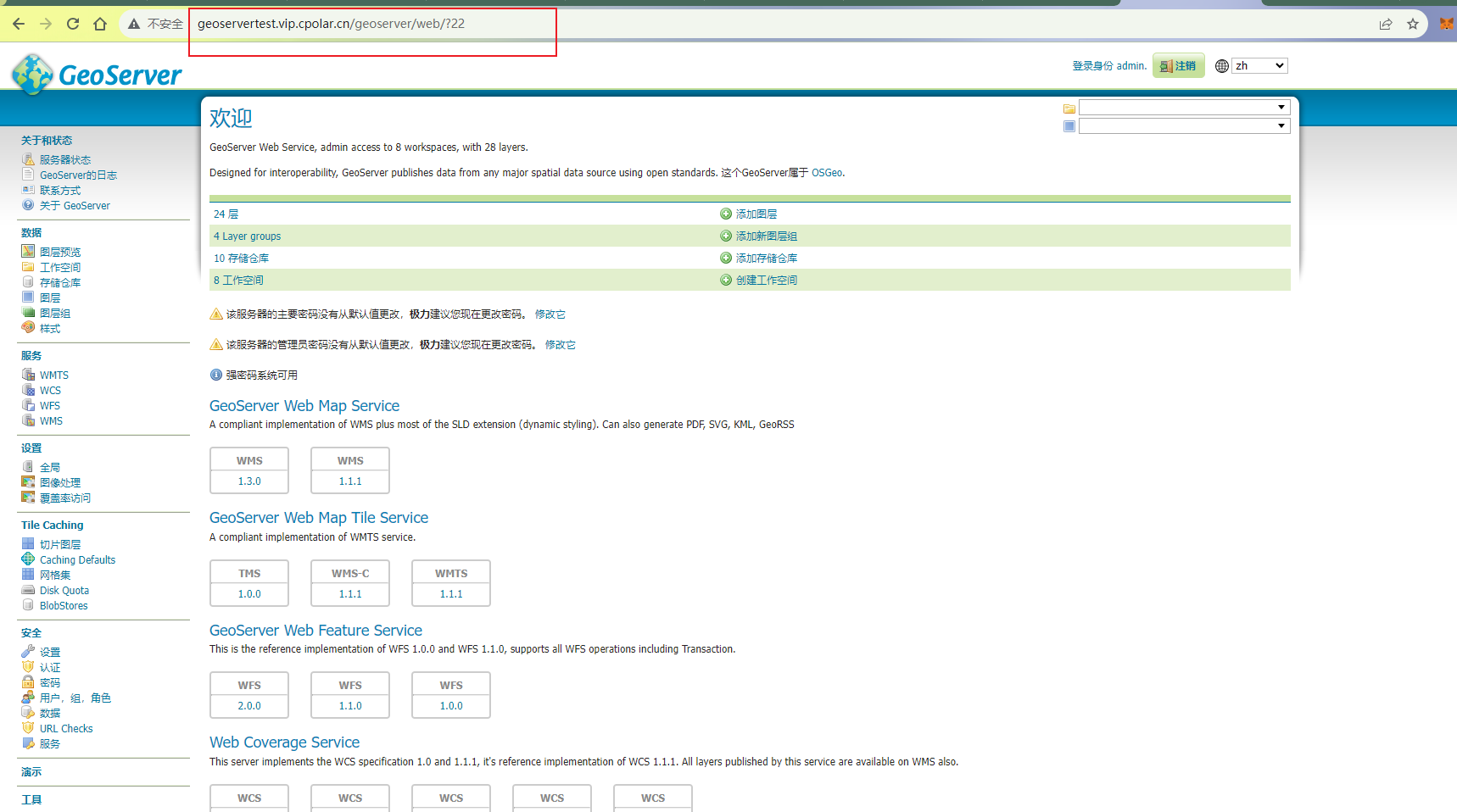
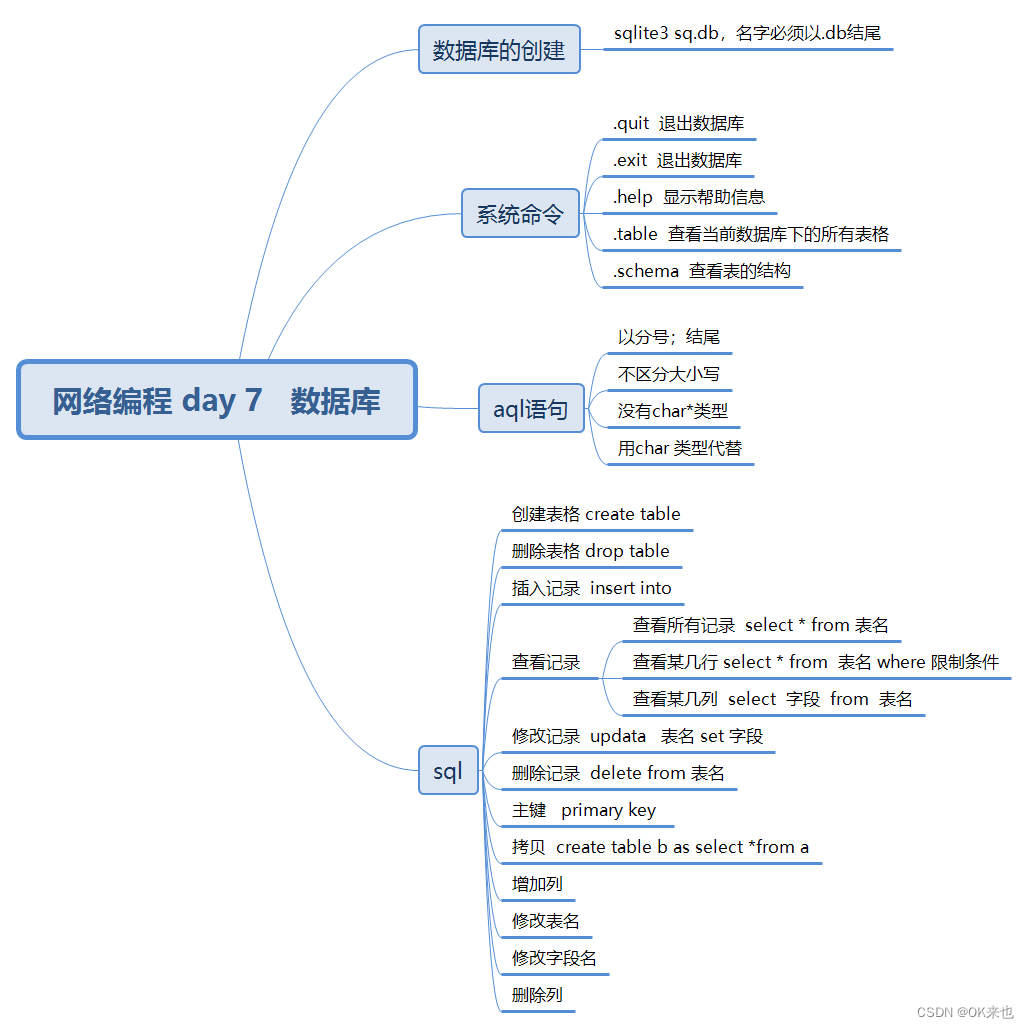
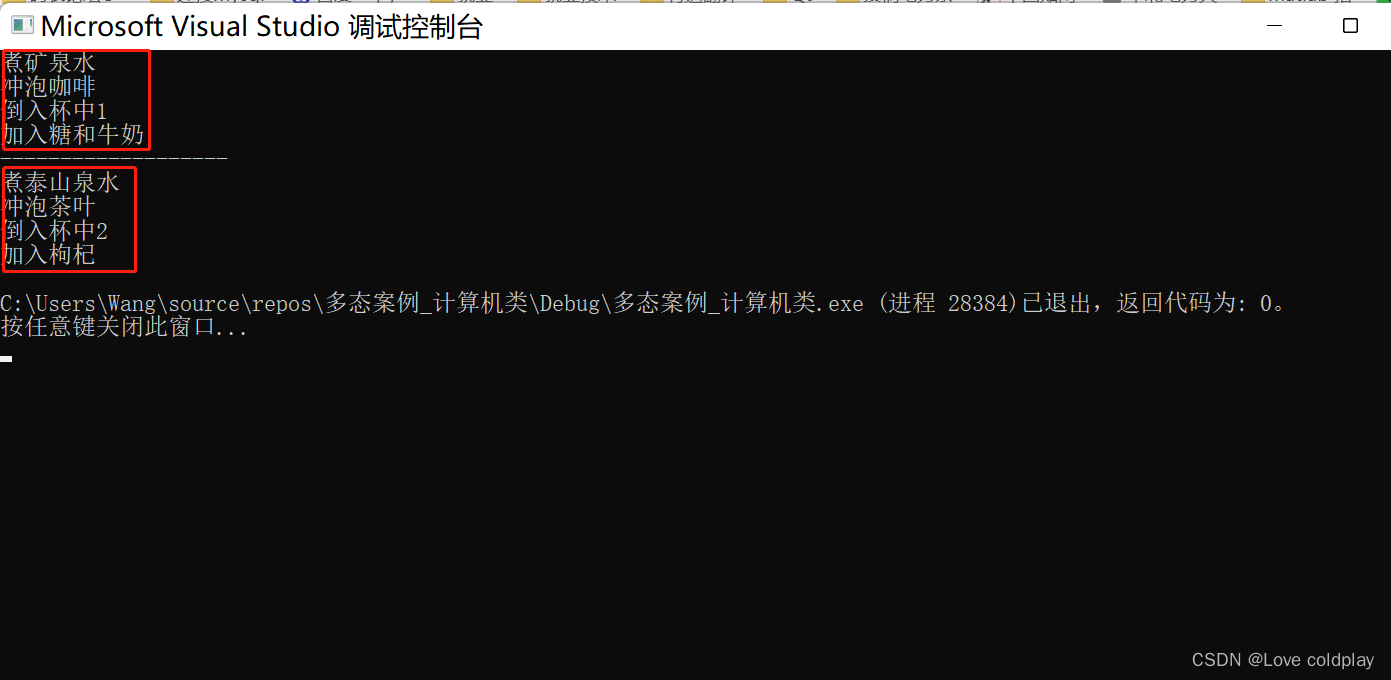
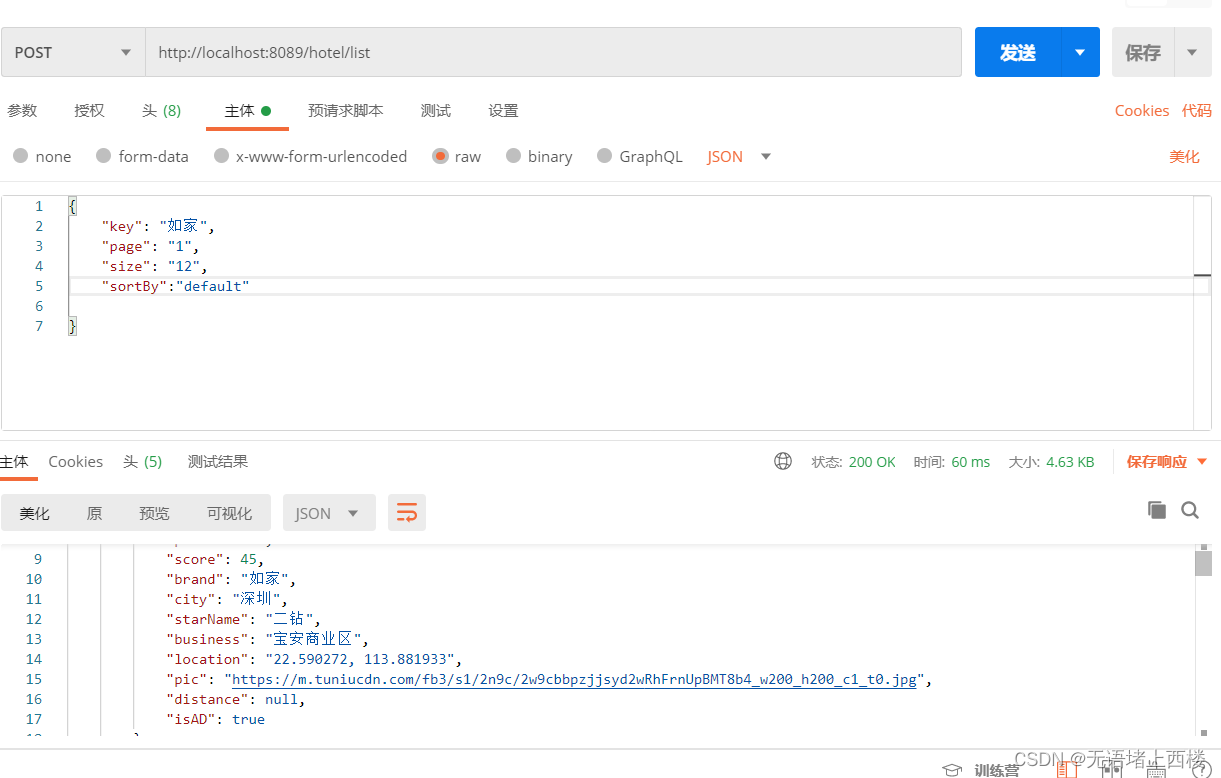

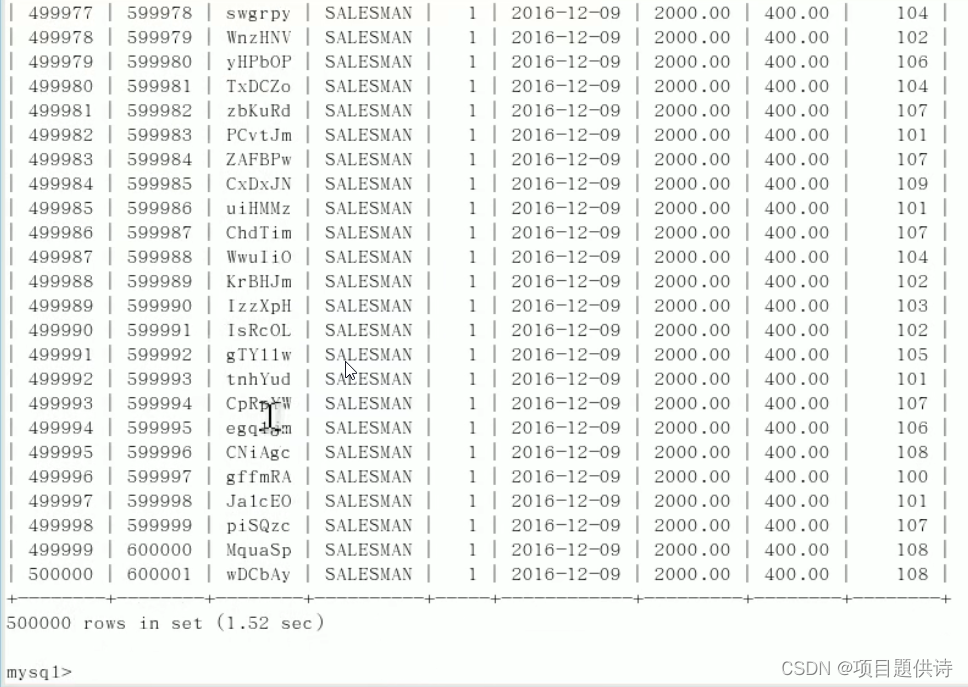


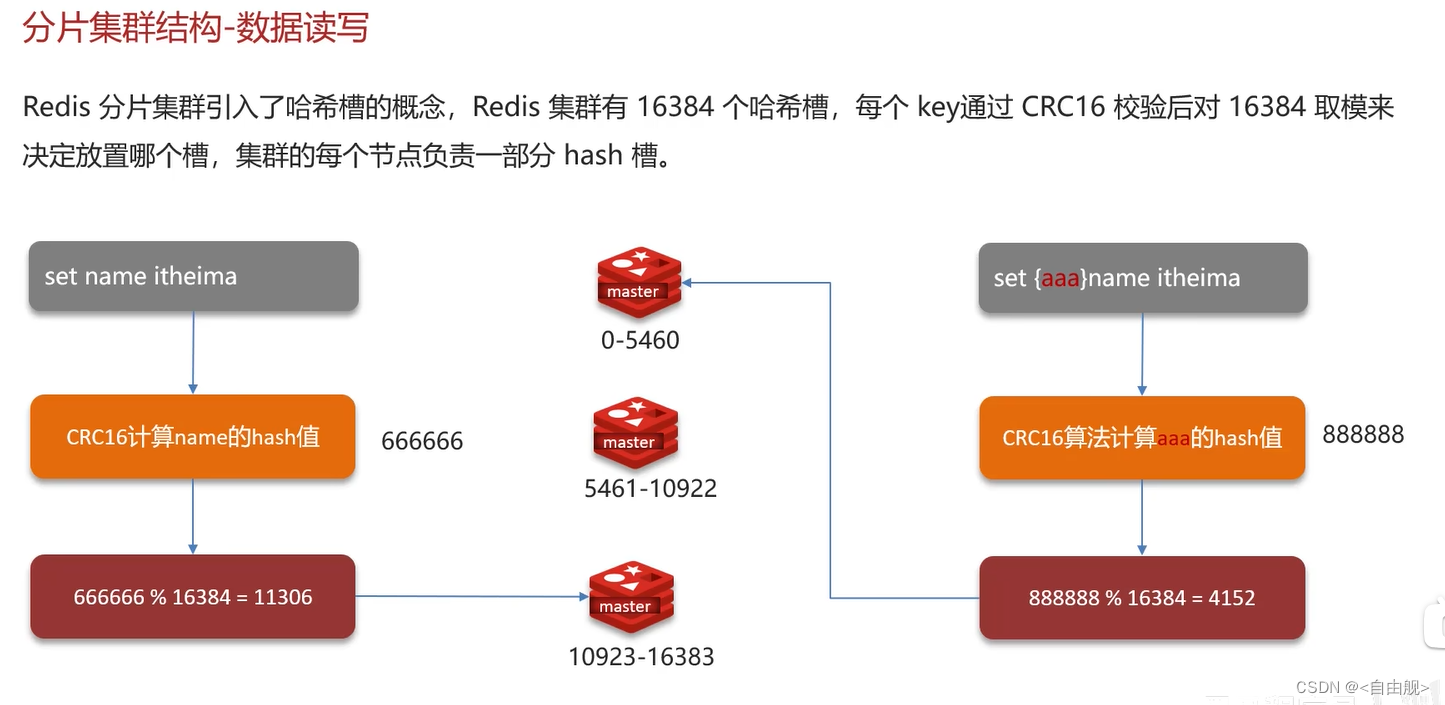
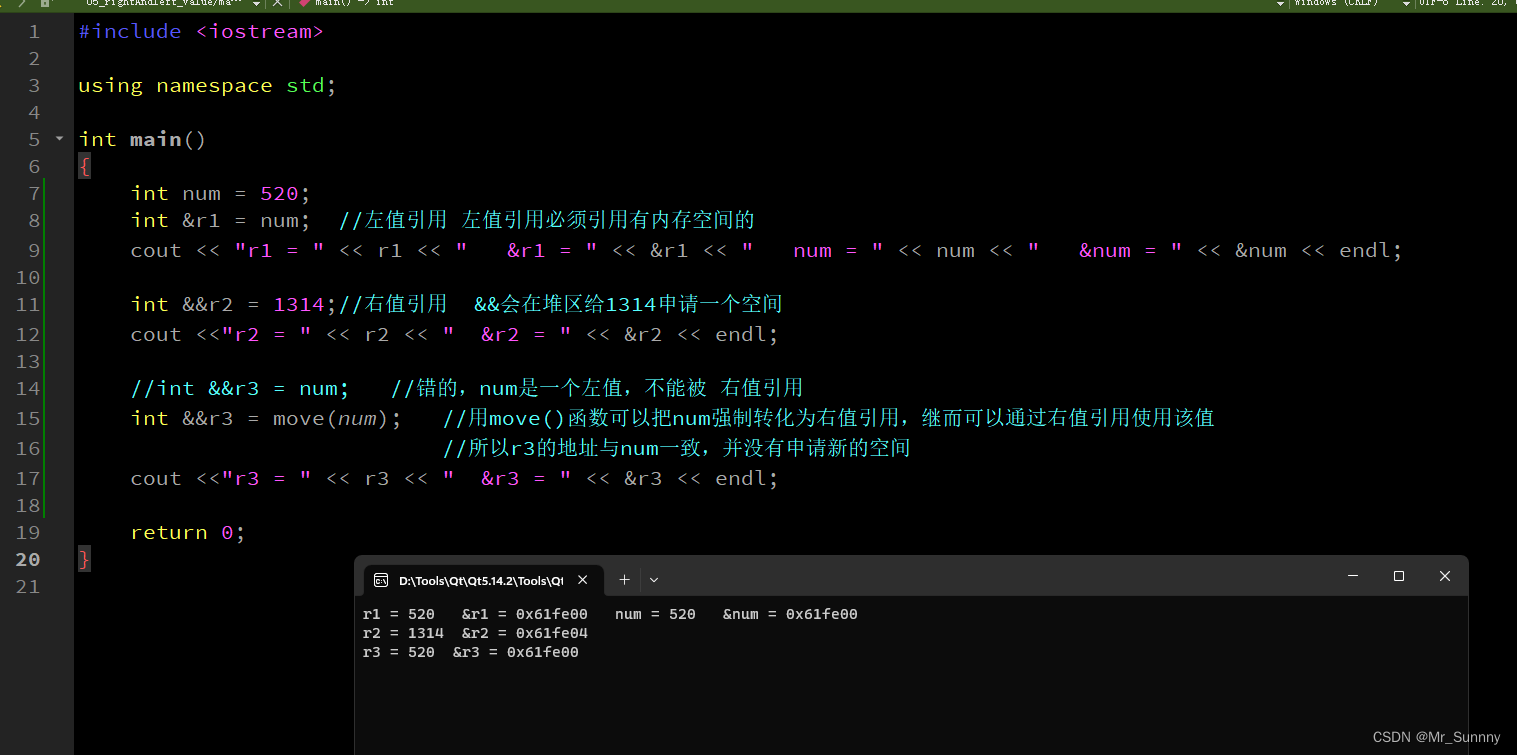



![【mybatis-plus】多数据源切换[dynamic-datasource] 手动切换数据源](https://img-blog.csdnimg.cn/e66182f54a0346e69b68a25c42600eaa.png)
